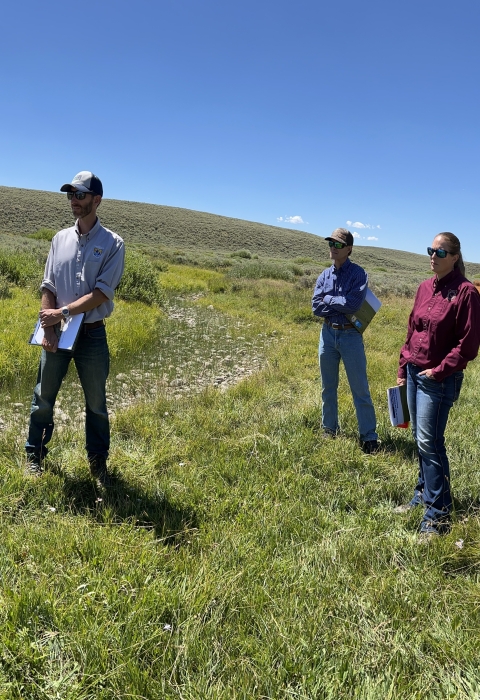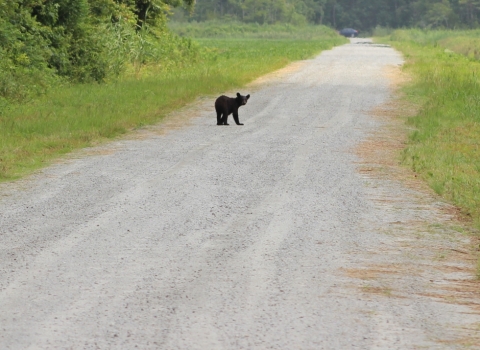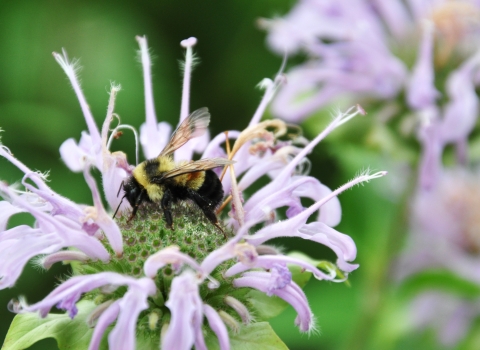At its core, the Bipartisan Infrastructure Law Bipartisan Infrastructure Law
The Bipartisan Infrastructure Law (BIL) is a once-in-a-generation investment in the nation’s infrastructure and economic competitiveness. We were directly appropriated $455 million over five years in BIL funds for programs related to the President’s America the Beautiful initiative.
Learn more about Bipartisan Infrastructure Law is a significant investment in the nation’s infrastructure and economic competitiveness. For the U.S. Fish and Wildlife Service, the funding will build on proven projects, programs and partnerships that protect our cherished wildlife and natural resources. It will improve public safety, create jobs and connect communities. This historic law is giving us and Nature a chance.
On November 15, 2021, President Biden signed the Bipartisan Infrastructure Law, providing the Service with $455 million, over five years, to support and implement projects to help local, state and Tribal communities tackle the climate crisis, advance environmental justice, and protect wildlife and natural resources. For many of these investments, we coordinated with our conservation partners, Tribal nations and Indigenous communities to enhance locally led conservation efforts and increase recreational opportunities on public lands.
In 2022, we allocated nearly $111 million for just over 300 projects across the country. There are so many positive impacts resulting from this once-in-a-generation funding, and we’re excited to highlight some of these in the following pages. In the Bipartisan Infrastructure Law’s inaugural year, we identified 12 projects in the Delaware River Basin, 33 in the Klamath Basin and five in the Lake Tahoe area that will provide habitat restoration, invasive species invasive species
An invasive species is any plant or animal that has spread or been introduced into a new area where they are, or could, cause harm to the environment, economy, or human, animal, or plant health. Their unwelcome presence can destroy ecosystems and cost millions of dollars.
Learn more about invasive species control, conservation of at-risk species and other benefits to these significant ecosystems. The Service and partners also started work on 40 National Fish Passage Program projects which are restoring habitat connectivity for aquatic species and reducing flooding risks and public safety hazards. And, we co-sponsored a National Fish Passage Bipartisan Infrastructure Law workshop to pull together diverse groups, including more than 100 practitioners from federal and state agencies, Native American Tribes, conservation organizations and other partner organizations, to identify shared goals in an effort to make the most of this opportunity.
Through our Legacy Pollution efforts, we are creating climate resiliency by plugging 175 orphan wells on six National Wildlife Refuges in Louisiana and Oklahoma that are actively leaking hydrocarbons, methane and contaminated water and pose a threat to wildlife, their habitats and people living nearby. And, through the Service’s Sagebrush Conservation program, we are implementing 49 projects in the western states to conserve strategic areas within the sagebrush sagebrush
The western United States’ sagebrush country encompasses over 175 million acres of public and private lands. The sagebrush landscape provides many benefits to our rural economies and communities, and it serves as crucial habitat for a diversity of wildlife, including the iconic greater sage-grouse and over 350 other species.
Learn more about sagebrush ecosystem and restore and safeguard precious water resources for neighboring communities and wildlife.
It’s been an unprecedented year and I’m eager to embark on year two. Before us is increased opportunity to develop and build even stronger relationships with Tribal governments, Indigenous communities, state agencies, land-owners and partners. And, since these investments directly correlate to the Department of Interior’s America the Beautiful and Great American Outdoors Act Great American Outdoors Act
This landmark conservation law, enacted in 2020, authorizes the use of up to $1.9 billion a year in energy development revenues for five years for needed maintenance to facilities and infrastructure in our wildlife refuges, national parks, forests, recreation areas and American Indian schools.
Learn more about Great American Outdoors Act initiatives, they are collectively improving natural infrastructure and enhancing work we are already doing. I believe that we can use Bipartisan Infrastructure Law natural investments as an avenue to encourage broader and more diverse communities to come together in partnership and make an impact.
“In my book, this is a win-win for the Service and the fish, wildlife and plants we are entrusted to protect on behalf of the public.”





